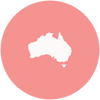Breastfeeding is an intimate and nurturing experience between mother and baby, but it can sometimes be marred by unexpected challenges such as thrush. This fungal infection, predominantly caused by Candida albicans, can affect both the mother and baby, leading to discomfort and potential hurdles in your breastfeeding journey.
Amelia, our lactation expert, provides comprehensive insights into understanding, treating, and preventing thrush, ensuring you're well-equipped to tackle this common issue. Amelia is a Registered Child and Family Health Nurse, Childbirth Educator and International Board Certified Lactation Consultant (IBCLC). Amelia created her business Birth and Baby Co to support families as they transition into parenthood from pregnancy all the way through to their postpartum period. She offers Hypnobirthing Australia birth education, lactation consultations and newborn education. She is also a mum of two young girls and understands the challenges of new motherhood and the vulnerabilities it brings.
Understanding thrush
The first signs of thrush on the nipple is pain or burning sensation in the nipples. It thrives in warm, moist environments, making the breastfeeding mother and infant particularly susceptible. Recognising the early signs of thrush is pivotal for prompt treatment and continued breastfeeding success. Often nipple thrush can be linked to women who have a history of vaginal thrush, recent history of antibiotic use for mother/baby or recurrent nipple damage for others there may not be a distinct reason for it.
Signs and symptoms
For mothers, thrush can manifest as:
- Noticeable redness and an unusual shiny or flaky appearance of the nipple/areola area
- Persistent pain, including a burning sensation that may not subside even post-feeding
- The presence of white spots or a lingering wound on the nipple that seems resistant to healing.
For babies, the indicators include:
- Distinct white patches on the tongue, gums, or inner cheeks that don't easily wipe away
- A nappy rash that's notably bright red with spotty appearances, distinguishing it from regular rashes.

Common misconceptions
Distinguishing thrush from other breastfeeding ailments is crucial. A common oversight is mistaking a milky residue in a baby's mouth for thrush. This residue, often a result of poor tongue function, underscores the importance of a correct diagnosis before unnecessary treatment. Another common reason for misdiagnosis is nipple vasospasm, which causes a similar burning sensation in the nipple.
Treatment strategies
Effective treatment hinges on addressing both mother and baby to halt the cycle of reinfection. Treatment modalities range from oral antifungal gels for the infant's mouth to topical or oral antifungals for the mother. It's essential to embark on this treatment journey under the guidance of your doctor or midwife, ensuring a tailored approach that suits both your and your baby's needs. For recurrent thrush they may take a swab of the nipple or baby's mouth to confirm the strain and adjust the treatment.
Recurrent thrush challenges
Recurrent thrush can be particularly disheartening, signalling the need to reassess your situation. Persistent symptoms warrant a revisit to your healthcare provider to explore other underlying causes. For recurrent thrush they may take a swab of the nipple or baby's mouth to confirm the strain and adjust the treatment.
Additionally, optimising your breastfeeding technique with professional support can mitigate nipple trauma, a common thrush precursor. Maintaining good hygiene is crucial, as thrush is easily spread between family members and areas of the body.
Amelias top tips for managing thrush
- Practice good hand hygiene
- Sterilise dummies and all pump parts/bottles if using
- Clean all toys, linen, bras regularly to prevent recontamination
- Wash towels, face washes, bras in hot water and dry them in the sun
- Change breast pads regularly
- Rinse nipples with clean water and let them air dry after each feed
- Eat a healthy diet and drink plenty of water
- Continue to breastfeed as able. If breastfeeding is too painful, regularly express your breastmilk
- Continue to liaise with an IBCLC to assist you with getting back on track.
Click the links below to read more on the topics:
A note from Lactamo Founder, Etta
Breastfeeding: what to expect in the first few days after birth






